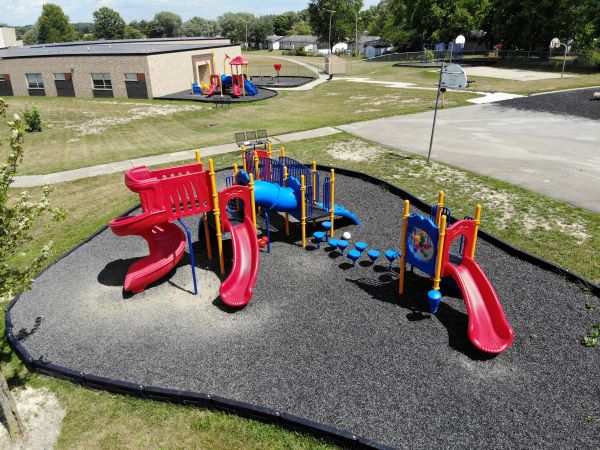What should be in a school playground?
A school playground should have these elements: safety surfacing, a play structure, inclusive equipment, natural equipment, site amenities, and educational components. The school playground is a vital space where students develop physical, social, and cognitive skills essential for their overall well-being. A well-designed playground contributes significantly to a child's growth, fostering physical activity, social interaction, and imaginative play. Let’s explore the key elements that should be incorporated into a school playground to create an environment that promotes learning, fun, and holistic development!

Safety First
Ensuring the safety of children is paramount in any school playground design. Soft, impact-absorbing surfaces such as pour-in-place rubber or mulch beneath play structures help prevent injuries from falls. Age-appropriate equipment and regular maintenance are crucial aspects of a safe and secure environment. Adequate fencing and supervision also contribute to creating a controlled and secure space for play.
Variety of Play Structures
A diverse range of play structures caters to the varied interests and abilities of students. Incorporating elements such as slides, swings, climbing structures, and balance beams ensures that children can engage in activities that challenge and develop different skills. Providing both open spaces for group activities and secluded areas for quieter play allows for a well-rounded experience.
Inclusive Design
An inclusive playground accommodates children of all abilities, promoting a sense of belonging and equal participation. Features like wheelchair-accessible ramps, sensory-rich components, and adaptive swings ensure that every child can actively participate in the joy of play. Inclusivity fosters empathy and understanding among students, nurturing a supportive and accepting school community.
Natural Elements
Incorporating natural elements into the playground design connects children with the environment and stimulates their senses. Trees, plants, and greenery not only provide shade but also create a more visually appealing and calming atmosphere. Nature-inspired play equipment, like log balance beams and boulder climbing walls, enhances the connection between children and the natural world.
Site Amenities
The inclusion of benches, picnic tables, and shaded areas encourages social interaction and provides spaces for relaxation and observation. These gathering areas promote communication, friendship-building, and a sense of community among students. Well-placed seating also allows for supervision and ensures that teachers can easily monitor and facilitate positive interactions.
Educational Elements
Integrating educational components into the playground design enhances the learning experience. Features like interactive panels, educational games, and outdoor classrooms create opportunities for intellectual engagement. These elements not only support academic development but also instill a love for learning in a dynamic and interactive environment.
Conclusion
A thoughtfully designed school playground goes beyond a space for physical activity; it becomes a hub for social interaction, creativity, and learning. By incorporating safety measures, a variety of play structures, inclusive design, natural elements, open spaces, seating areas, and educational components, schools can create an environment that nurtures the holistic development of every child. Investing in a well-designed playground is an investment in the well-being and future success of the students it serves.

